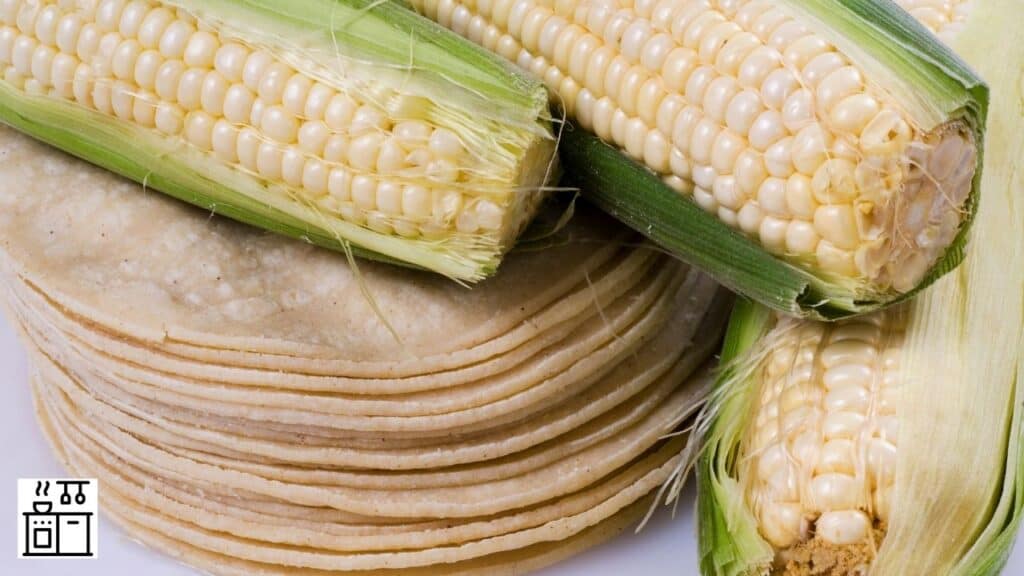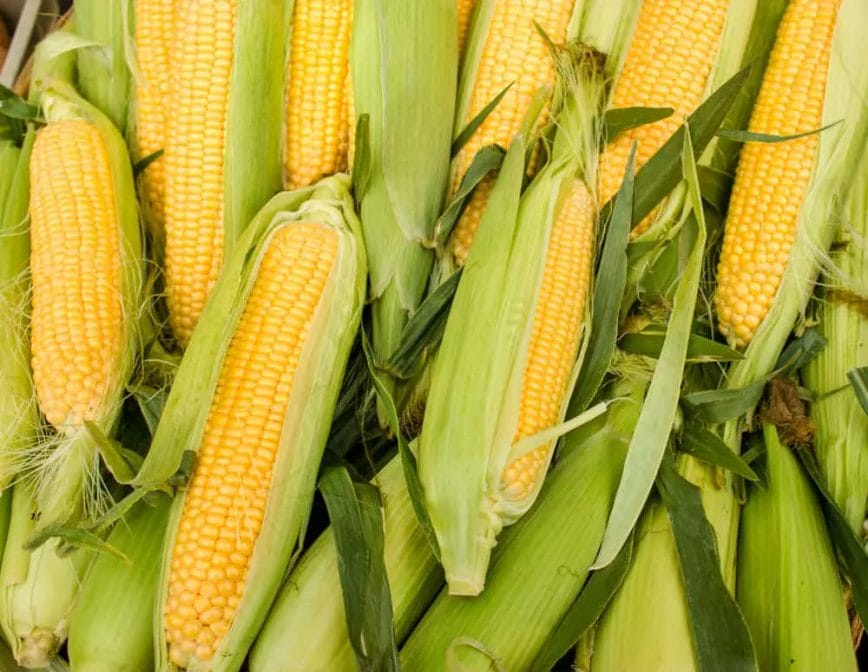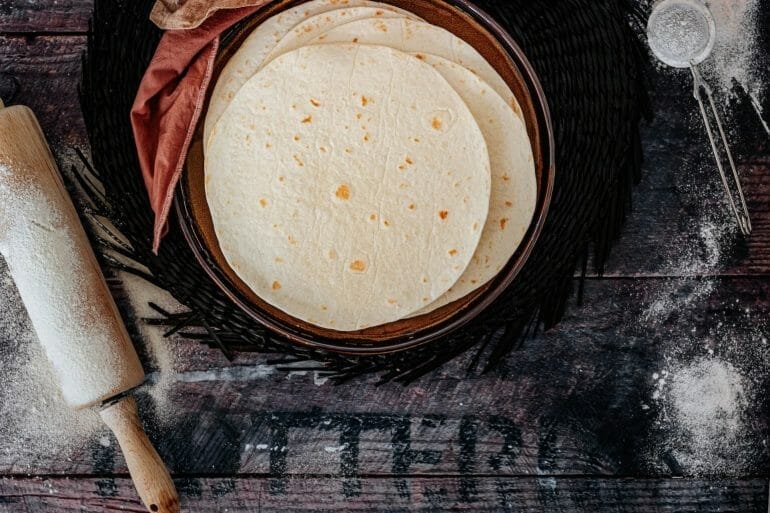If you’re following a candida diet and wondering whether you can consume corn tortillas, you’re not alone.
Corn is a controversial food on this diet due to its potential to feed candida overgrowth. However, the answer isn’t a simple yes or no.
While some people find that corn tortillas don’t aggravate their symptoms, others may need to avoid them to maintain balance in their gut. It’s important to listen to your body and consult with a healthcare professional to determine if corn tortillas are suitable for your candida diet.

Understanding the Role of Corn Tortillas in Candida Diet
The Candida diet is a popular approach to combat and control Candida overgrowth in the body. It involves eliminating certain foods that may promote the growth of Candida yeast, such as sugar, refined carbohydrates, and processed foods. Instead, the diet focuses on consuming foods that are low in sugar and carbohydrates to help restore balance in the body.
One common question that arises when following the Candida diet is whether corn tortillas are allowed. Corn tortillas are a staple in many cuisines, particularly in Latin American and Mexican dishes. They are made from ground corn, water, and lime and are a versatile and widely consumed food item.
When it comes to the Candida diet, the answer to whether corn tortillas are suitable depends on the individual’s level of sensitivity and their specific dietary needs. Here are some factors to consider:
1. Carbohydrate Content
Corn tortillas are relatively low in carbohydrates compared to other types of bread or tortillas made from refined flour.
This makes them a potentially better option for individuals following the Candida diet, as high carbohydrate intake can contribute to Candida overgrowth.
However, moderation is key, and portion control should be practiced.
2. Gluten-Free and Allergen Friendly
Corn tortillas are naturally gluten-free, which is beneficial for those who have gluten sensitivities or celiac disease.
Additionally, they are free from common allergens such as wheat, soy, and dairy, making them a safer choice for individuals with food sensitivities or allergies.
3. Nutritional Value
Corn tortillas provide some essential nutrients, including fiber, magnesium, and B vitamins. However, it is important to note that they are not as nutrient-dense as whole grains or other sources of carbohydrates.
Therefore, it is advisable to incorporate a variety of nutrient-rich foods to ensure a well-rounded diet.
4. Processing Methods
When selecting corn tortillas for the Candida diet, it is crucial to choose those made from organic, non-GMO corn and without any additives or preservatives.
Some commercially produced corn tortillas may contain added sugars or unhealthy fats, which should be avoided.
5. Personal Sensitivities
While corn tortillas are generally considered suitable for the Candida diet, some individuals may have specific sensitivities to corn.
If you experience digestive issues, inflammation, or other adverse reactions after consuming corn products, it is best to consult with a healthcare professional or nutritionist to determine the best course of action.
In summary, corn tortillas can be included in the Candida diet in moderation, especially for those who do not have specific sensitivities to corn. However, it is essential to choose organic, non-GMO options and practice portion control. It is always advisable to personalize the diet based on individual needs and consult a healthcare professional for guidance.

Alternatives to Corn Tortillas on a Candida Diet
When following a Candida diet, if you are craving that delicious tortilla texture and looking for alternatives, there are several options available that are Candida-friendly and equally satisfying.
1. Almond Flour Tortillas
Almond flour tortillas are a popular alternative to corn tortillas on a Candida diet. Almond flour is made from finely ground almonds and is low in carbohydrates and gluten-free.
These tortillas can be easily made at home using a combination of almond flour, eggs, and a few other ingredients.
They provide a nutty and slightly sweet flavor, making them a versatile option for various recipes.
2. Coconut Flour Tortillas
Coconut flour tortillas are another fantastic alternative for those following a Candida diet. Coconut flour is made from the dried meat of coconuts and is high in fiber and low in carbohydrates.
These tortillas have a subtle coconut flavor and can be made by combining coconut flour, eggs, and other ingredients. They are soft, pliable, and can be used for making wraps, quesadillas, or tacos.
3. Lettuce Wraps
If you prefer a lighter and carb-free option, lettuce wraps are an excellent choice. Instead of using a tortilla, wrap your desired fillings in large lettuce leaves such as romaine, iceberg, or butter lettuce.
Lettuce wraps offer a refreshing crunch and are a great way to include more leafy greens in your diet. They are easy to assemble and can be enjoyed with various fillings such as grilled chicken, vegetables, or even seafood.
4. Zucchini Tortillas
Zucchini tortillas are a creative and healthy alternative to corn tortillas. These tortillas are made by grating zucchini and combining it with eggs, herbs, and other ingredients.
The mixture is then cooked on a skillet to create thin and pliable tortillas. Zucchini tortillas are low in carbohydrates, high in fiber, and provide a subtle vegetable flavor.
They are perfect for wrapping up your favorite fillings or as a base for mini pizzas.
5. Cassava Flour Tortillas
Cassava flour tortillas are a great option for those on a Candida diet who are looking for a gluten-free and grain-free alternative.
Cassava flour is made from the starchy root vegetable called cassava, also known as yuca. These tortillas can be made by combining cassava flour with water, oil, and a few other ingredients.
They have a neutral taste, similar to traditional wheat tortillas, and can be used in various Mexican-inspired dishes.
6. Eggplant Tortillas
Eggplant tortillas are a unique and flavorful alternative that adds a twist to your favorite Mexican dishes. Start by slicing eggplants lengthwise and grilling or roasting them until tender. The slices can be used as a wrap for your fillings, creating a delicious and low-carb alternative to traditional tortillas. The slight smoky flavor of the eggplant adds a wonderful dimension to your meal.
7. Cauliflower Tortillas
Cauliflower tortillas are a popular choice for those following a low-carb or grain-free diet. Made from finely grated cauliflower, eggs, and herbs, these tortillas are easy to prepare and have a mild, neutral taste.
They can be used in various recipes such as tacos, enchiladas, or even as a base for pizza crust. Cauliflower tortillas are a versatile option that allows you to enjoy your favorite Mexican dishes guilt-free.

Making Candida-Friendly Tortillas at Home
Tortillas are a popular staple in many cuisines, but for individuals dealing with Candida overgrowth, traditional tortillas made from wheat or corn can be problematic. These grains contain high amounts of carbohydrates, which can feed the Candida fungus and exacerbate symptoms. However, there is no need to give up on enjoying tortillas altogether. With a few simple substitutes, you can make delicious Candida-friendly tortillas at home.
Ingredients
Here’s a list of the ingredients you’ll need to make Candida-friendly tortillas:
- 2 cups of almond flour
- 1/4 cup of coconut flour
- 2 tablespoons of ground flaxseed
- 1/2 teaspoon of sea salt
- 2 tablespoons of coconut oil
- 3/4 cup of warm water
Instructions
Follow these step-by-step instructions to make your own Candida-friendly tortillas:
- In a mixing bowl, combine the almond flour, coconut flour, ground flaxseed, and sea salt.
- Add the coconut oil to the dry ingredients and mix until well combined.
- Gradually add the warm water to the mixture, stirring continuously, until a dough forms.
- Knead the dough on a clean surface for a couple of minutes to ensure it is well mixed.
- Divide the dough into 6 equal portions and shape each portion into a ball.
- Place a ball of dough between two pieces of parchment paper and roll it out into a thin circle, about 6 inches in diameter.
- Heat a non-stick skillet over medium heat and lightly grease it with coconut oil.
- Carefully transfer the rolled-out tortilla onto the hot skillet and cook for about 1-2 minutes on each side, until lightly golden brown.
- Repeat the process with the remaining dough portions.
- Once cooked, remove the tortillas from the skillet and let them cool slightly before serving.
Additional Tips
Consider these additional tips to make the most out of your Candida-friendly tortillas:
- To add extra flavor to your tortillas, you can incorporate herbs or spices such as garlic powder, oregano, or cumin into the dough.
- If you prefer a softer tortilla, you can steam them briefly after cooking to make them more pliable.
- Store any leftovers in an airtight container in the refrigerator for up to 3 days.
Now that you have a recipe for Candida-friendly tortillas, you can enjoy them as a nutritious alternative to traditional wheat or corn tortillas. Fill them with your favorite Candida-safe ingredients such as grilled vegetables, avocado, lettuce, or lean protein for a satisfying and healthy meal.
Navigating Dining Out on a Candida Diet: Corn Tortilla Edition
Following a candida diet can be challenging, especially when dining out. With so many hidden sugars and processed ingredients in restaurant meals, it’s important to be mindful of what you’re consuming. In this section, we will explore how to navigate dining out on a candida diet with a focus on corn tortillas, a popular option in many Mexican and Latin American cuisines.
1. Understanding the Candida Diet:
The candida diet is a low-sugar, anti-inflammatory diet designed to combat candida overgrowth in the body.
It involves eliminating processed foods, refined sugars, gluten, and alcohol while focusing on whole, nutrient-dense foods.
2. Choosing Candida-Friendly Restaurants:
When dining out, it’s essential to choose restaurants that offer candida-friendly options.
Mexican and Latin American restaurants are a great choice as they often have dishes that can be easily modified to fit a candida diet, such as corn tortillas instead of flour tortillas.
3. Exploring Corn Tortilla Options:
Corn tortillas are a staple in Mexican cuisine and can be a suitable choice for those following a candida diet.
However, it’s important to keep in mind that some corn tortillas may contain added sugars or other ingredients that are not candida-friendly. Opt for homemade or organic corn tortillas whenever possible.
4. Checking Ingredient List and Preparation Methods:
When dining out, don’t hesitate to ask your server about the ingredients used in the corn tortillas and how they are prepared.
Avoid tortillas that contain added sugars, preservatives, or other potential candida triggers. Look for simple, clean ingredient lists.
5. Choosing Candida-Friendly Fillings:
While corn tortillas themselves may be suitable for a candida diet, it’s crucial to choose fillings that align with the principles of the diet.
Opt for lean proteins like grilled chicken or fish, fresh vegetables, and guacamole or salsa as condiments. Avoid sugary marinades, cheese, and creamy dressings.
6. Modifying Menu Items:
Don’t be afraid to ask for modifications to menu items to make them candida-friendly.
Requesting no sauces, dressings, or cheese on your dish, and substituting corn tortillas for flour tortillas can help accommodate your dietary needs.
7. Be Mindful of Cross-Contamination:
Even if you choose a candida-friendly option, cross-contamination can still occur in restaurant kitchens.
Let your server know about your dietary restrictions and ask for precautions to be taken to avoid cross-contamination.
8. Bringing Your Own Corn Tortillas:
If you’re unsure about the ingredients or preparation methods of the corn tortillas offered at a restaurant, consider bringing your own.
This way, you can ensure that you are consuming candida-friendly tortillas without any hidden ingredients.
9. Planning Ahead and Researching Restaurants:
Before heading out to dine, do some research and find restaurants that offer candida-friendly options.
Check their menus online or give them a call to inquire about their ingredients and modifications they can make to accommodate your dietary needs.
Can you eat corn tortillas on a Candida diet?
Yes, you can eat corn tortillas on a Candida diet, but in moderation. Corn is high in starch, which can potentially feed the Candida overgrowth. It is best to opt for small portions and choose organic, non-GMO corn tortillas without any added sugars or preservatives.
What foods should I avoid on a Candida diet?
On a Candida diet, it is recommended to avoid sugar, refined carbohydrates, alcohol, processed foods, dairy products, and certain fruits and vegetables high in natural sugars. These foods can promote the growth of Candida yeast in the body.
What can I eat on a Candida diet?
On a Candida diet, you can include foods such as non-starchy vegetables, lean proteins, healthy fats, low-sugar fruits, herbs, and spices. It is important to focus on whole, unprocessed foods and incorporate probiotics to support a healthy balance of gut bacteria.
Conclusion
While following a candida diet, it is important to consider the food choices carefully. Corn tortillas can be a part of the candida diet, but certain factors need to be taken into account.
Although corn is gluten-free, it is high in carbohydrates, which can feed the candida population.
Additionally, some individuals with candida overgrowth may have sensitivities or allergies to corn. It is recommended to consume corn tortillas in moderation and to listen to your body’s response.
It is also beneficial to opt for organic, non-GMO corn tortillas whenever possible to minimize the potential negative effects on your health.

